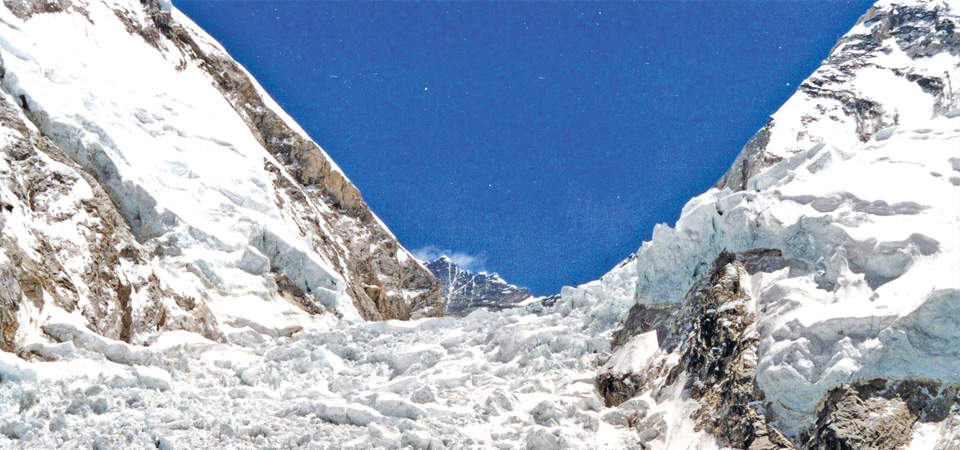Nepal at high risk of climate-related disasters: Report

By A Staff Reporter
Kathmandu, Nov. 13: A new report on “When the climate becomes a threat: Evidence of Climate Change induced Loss and Damage in Nepal” by Dan Church Aid (DCA) a Danish member of the ACT Alliance, which was launched at the COP26 showed that Nepal is vulnerable, and affected both by melting glaciers, and increased temperatures and rain. In such a mountainous country, this has dramatic effects.
The report was launched in the presence of Minister Ramsahay Prasad Yadav, Ministry of Forests and Environment, said the climate action advisor at the DanChurchAid office in Nepal, Rajan Thapa.
The report highlights a variety of findings based on the research in the three municipalities of Nepal -- Aathbis of Dailkeh district, Panchadewal Binayak of Achham district and Barbardiya of Bardiya district. According to a statement issued by DCA, all three municipalities have experienced either flooding or landslides, two natural hazards which are linked to climate change.
Nepal is more vulnerable to climate-induced disasters. The report shows how people were forced to leave their houses, and how the water and the landslides destroyed their property and fields and killed their cattle. None of the three municipalities received international support, but local authorities and civil society organisations provided some immediate support. However, this support was far from enough and 82 per cent of the households had to take out loans to recover and re-establish their homes. Nine per cent chose to permanently leave their homes and can thus be called climate-induced displaced people.
Thapa, said, “The assessment shows that people have been forced from their homes and that some people choose never to return. This is sad, but also understandable, as climate change continues to pose a threat to these communities. Without adaptation to reduce the risk for flooding and landslides, these municipalities are likely to continue to face similar disasters, leading to more climate-induced loss and damage.”
“It is not fair that these poor families should have to take loans to recover,” Thapa continued. “This will put a debt burden on their shoulders, as they will have to repay the loan with interest. There is a real need for loss and damage finance, from developed countries, to support people who face climate change on the ground.”
The report highlights that both economic and non-economic loss and damage is very evident in Nepal and is a common concern, as well as an issue of climate justice.
Although the study covered a limited number of households, the total economic loss for those interviewed in the three municipalities was very high at around USD 388,355, with an average loss per household of approximately USD 4,176.
Displacement is a huge problem. The majority of people return, but 9 per cent have permanently relocated.
A majority of the affected people, 82 per cent, were forced to take loans to resettle after the disasters.
None of the villages received international support, and they had to rely on the local government and local organisations. However, the support they received was not enough - an average of USD 1000 to 13500 per household is not covered by the received support, according to the report.
Recent News

Do not make expressions casting dout on election: EC
14 Apr, 2022
CM Bhatta says may New Year 2079 BS inspire positive thinking
14 Apr, 2022
Three new cases, 44 recoveries in 24 hours
14 Apr, 2022
689 climbers of 84 teams so far acquire permits for climbing various peaks this spring season
14 Apr, 2022
How the rising cost of living crisis is impacting Nepal
14 Apr, 2022
US military confirms an interstellar meteor collided with Earth
14 Apr, 2022
Valneva Covid vaccine approved for use in UK
14 Apr, 2022
Chair Prachanda highlights need of unity among Maoist, Communist forces
14 Apr, 2022
Ranbir Kapoor and Alia Bhatt: Bollywood toasts star couple on wedding
14 Apr, 2022
President Bhandari confers decorations (Photo Feature)
14 Apr, 2022











